
Remodeling your bathroom can add significant value to your home. Your bathroom remodel cost in Columbus, OH will depend on size, fixtures, materials, labor, and other factors.
Make sure your shower stays water-tight


Hire a shower installation pro to identify the best type of shower door seal for you based on the nature of your shower and overall goals.
Choose a bottom seal if you want to stop water from seeping under the door.
If you have a hinge glass shower door, consider a side sweep seal.
A glass-to-glass seal makes sense if your shower has two glass doors.
Bulb seals can create a seal where two doors meet.
Shower door seals are an essential part of a shower door as they’re designed to keep water in the shower, preventing it from leaking out onto the floor. Our guide will walk you through eight types of shower door seals: Bottom seals, side sweeps, glass to glass, jamb seals, bulb seals, F-shaped or fin seals, magnetic seals, and drip rail seals. The one you need will depend on the door shape, the seal’s location, and whether it’s magnetized or not.
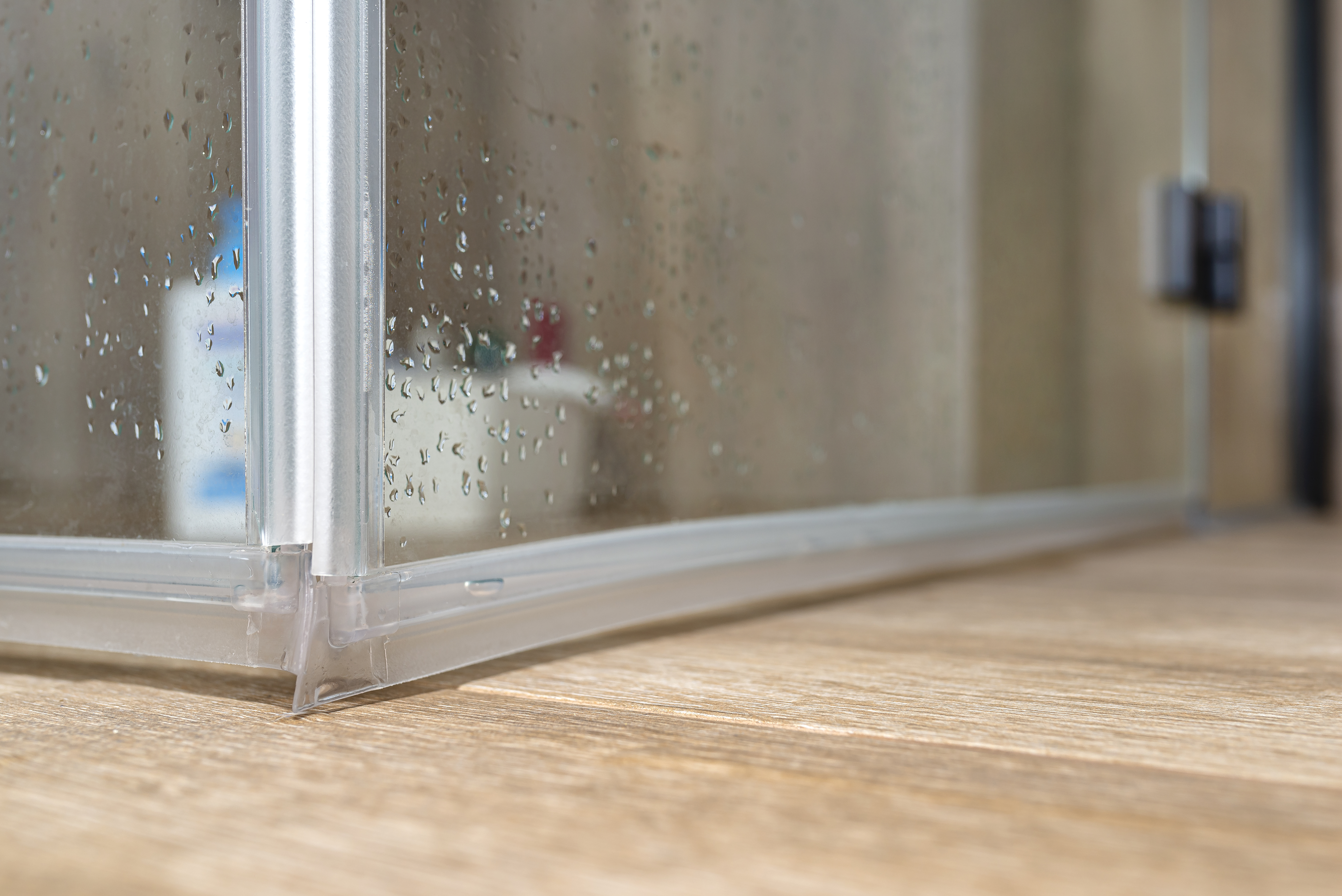
This is the most common type of shower door seal because, regardless of the style, the bottom of the shower needs to be sealed to prevent water from seeping or splashing out. The shape of the bottom seal will depend on the type of shower door. Bottom seals are essential for preventing leaks because you don’t want to add the cost of fixing water damage to the cost of installing a glass shower door.
Bottom seals can vary in appearance depending on the shower door. Most bottom shower seals have an extended sweep to cover the gap between the door and the shower.
Bottom seals are located on the bottom of the door.
Best for: Preventing water from escaping under the door
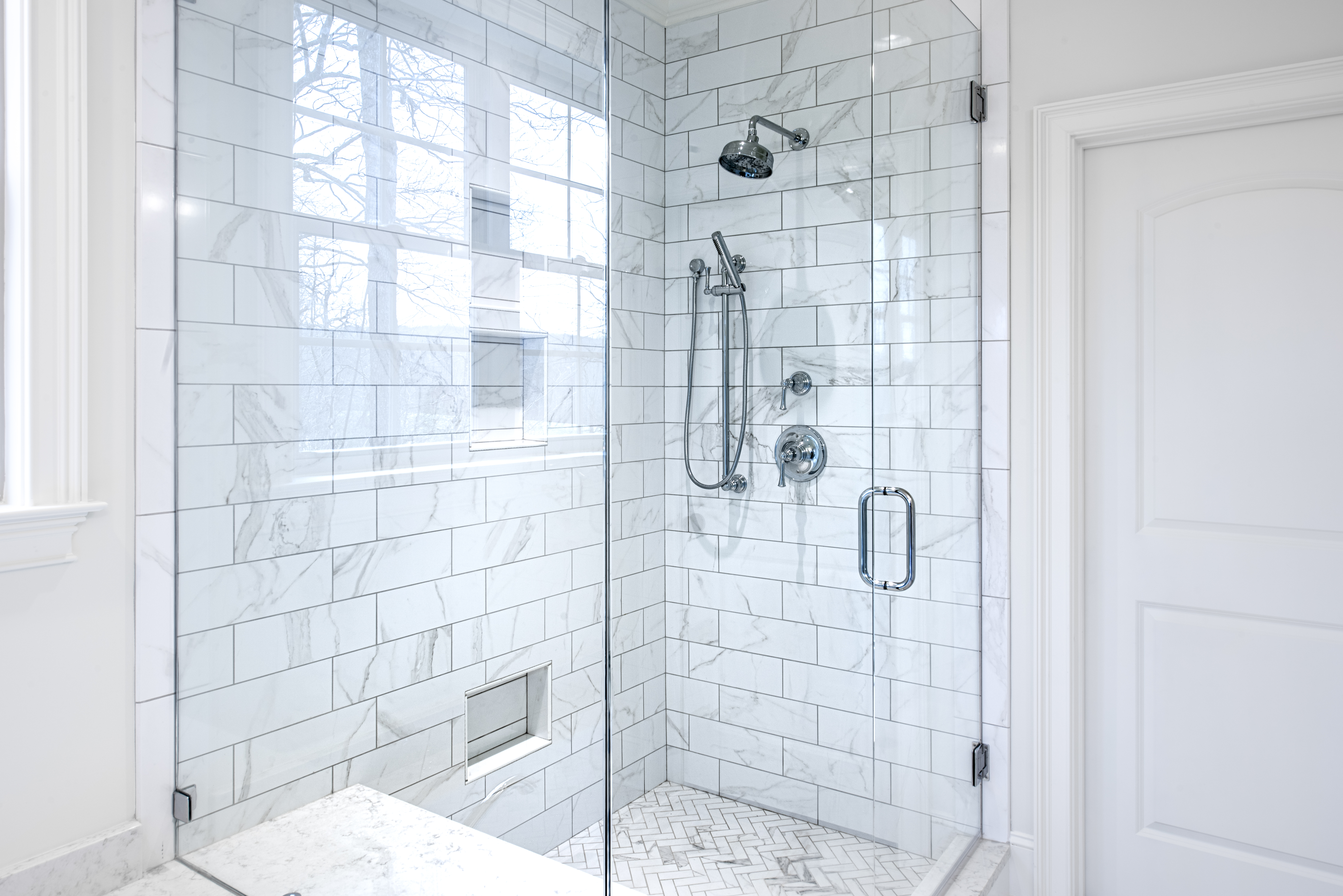
If the type of shower door you have has hinges where the door meets the wall, water can leak out around the hinges. A side sweep shower door seal prevents this from happening. Though they are essential for keeping the shower leak free, they can be more difficult to install than other styles of shower door seals.
Side sweep seals vary in appearance.
Side sweeps are located on the side of the shower door where the hinges are.
Best for: Hinged glass shower doors
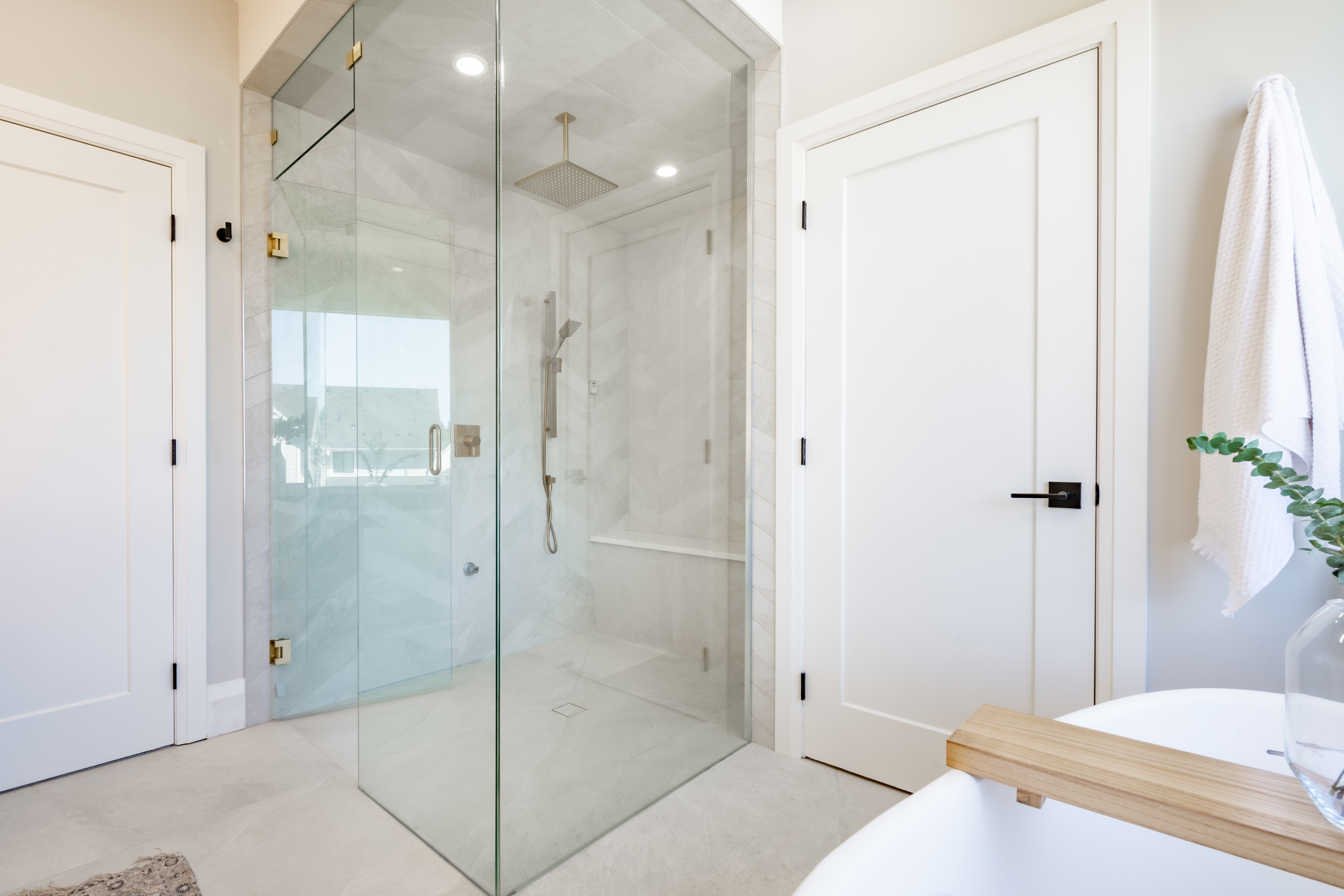
Glass to glass shower door seals are located where two glass shower doors meet. They run the full height of the door to keep water from leaking out between the doors. These seals also protect the doors from banging against each other and cracking or shattering.
Glass to glass shower door seals are typically F-shaped or fin seals. The piece that extends from the channels serves to close the gap between the doors to prevent water from escaping.
The best location for glass to glass seals are between glass shower doors.
Best for: Showers with two glass doors
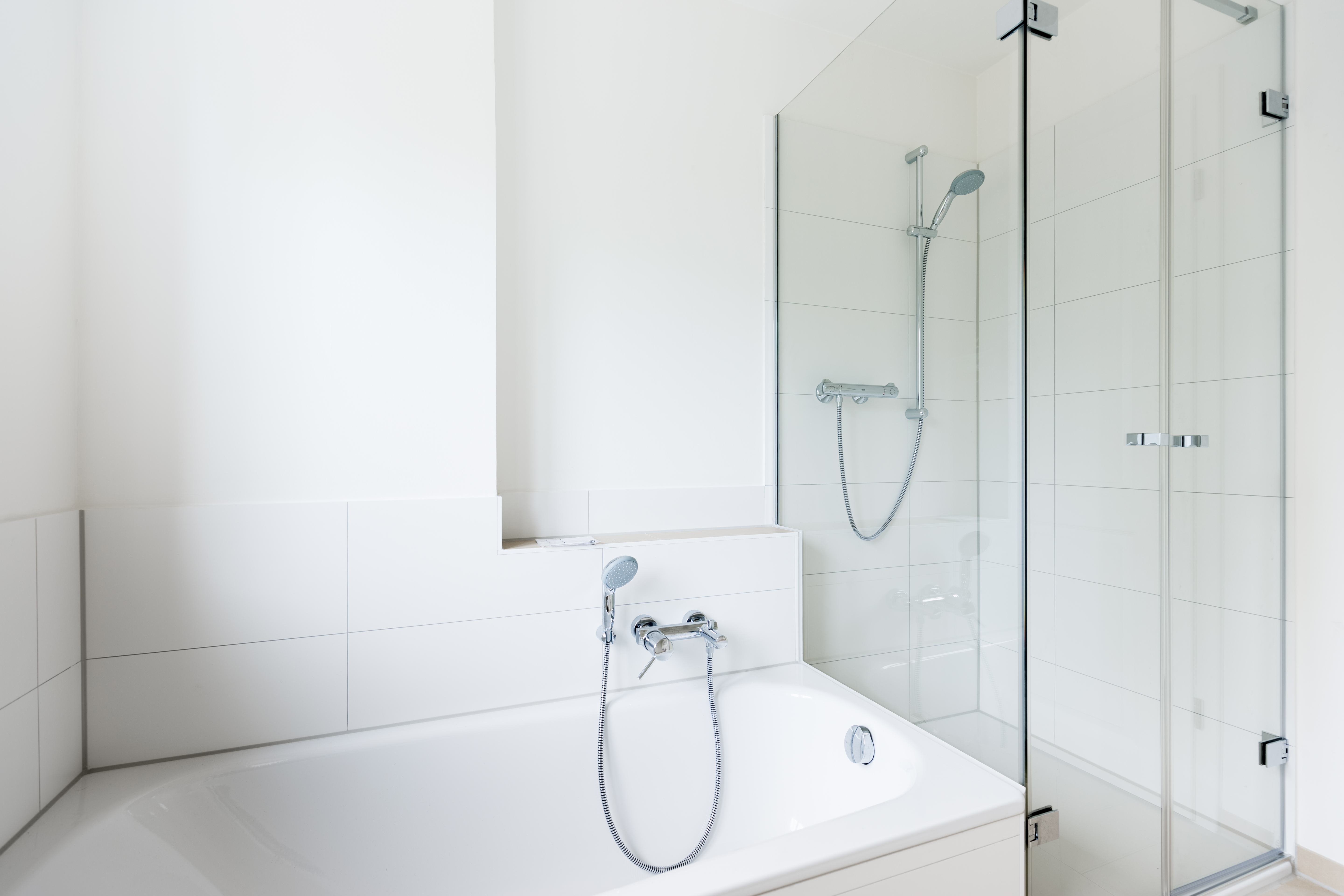
Jamb seals attach to the edge of the glass door to seal it when it meets another glass door or the wall. They come in various shapes and styles that fit the shower enclosure’s needs.
Like bottom, glass-to-glass, and side sweep seals, the appearance of jamb seals varies and can include bulb seals and fin seals.
Jamb seals are located on the edge of the door.
Best for: Vertical edges of glass shower doors

Bulb seals are installed on the shower door jamb to seal the place where two shower doors meet. They can also be installed on the bottom of the door or as a side seal where the shower door meets the wall.
Bulb seals have a channel for the door on one side and the opposite side features a rounded “bubble” that facilitates a softer close.
Bulb seals can be installed on the side or bottom edge of the door.
Best for: Creating a seal where two doors meet or where a door meets a wall
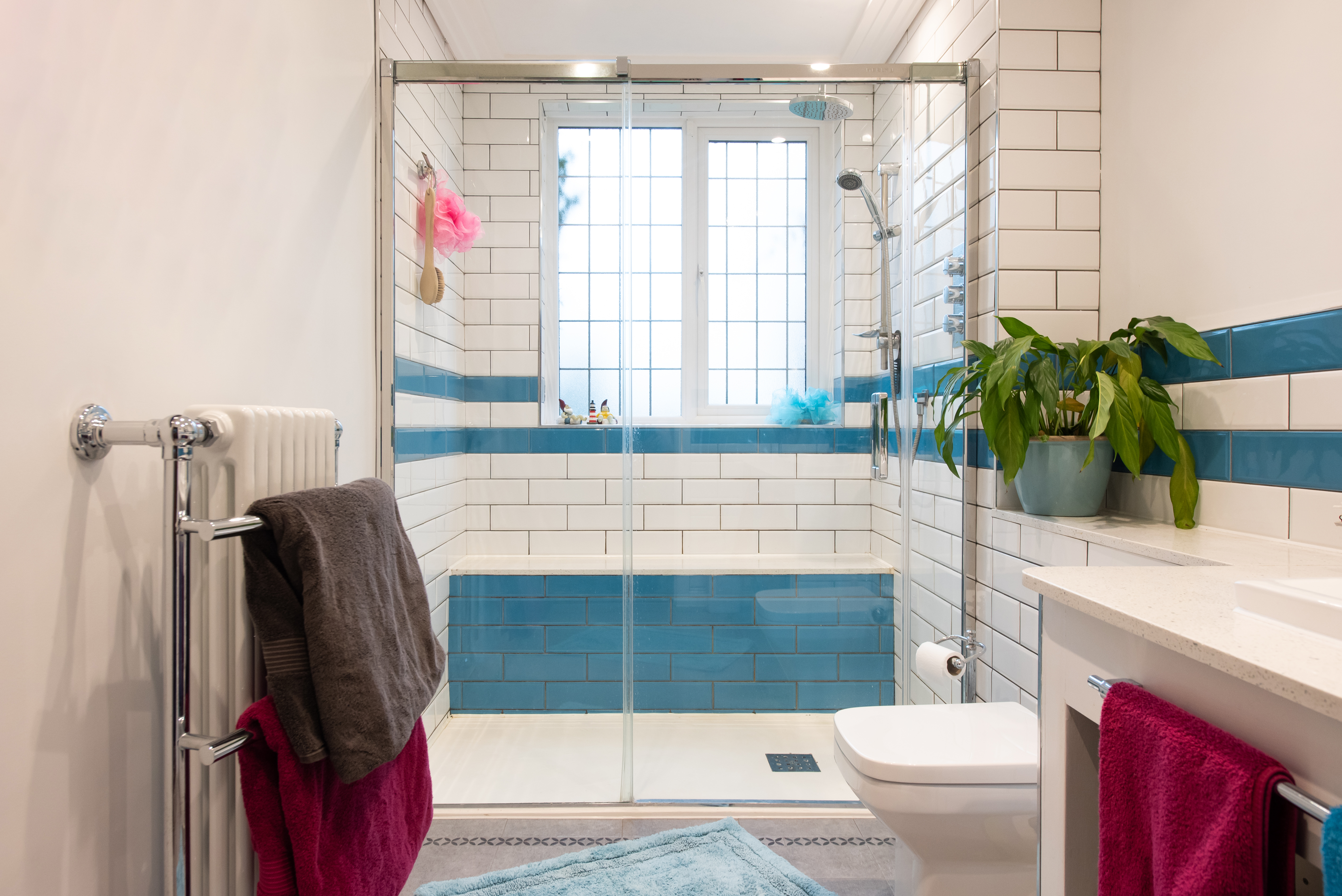
A fin seal has a channel that fits onto the shower door and an extended piece that covers where it meets another shower door to close the gap between the two doors.
Fin seals feature a channel and a long “fin” that extends from the channel to cover any gap between the shower door and adjacent surface.
This seal is best where two doors meet.
Best for: Creating a tight seal between two doors.
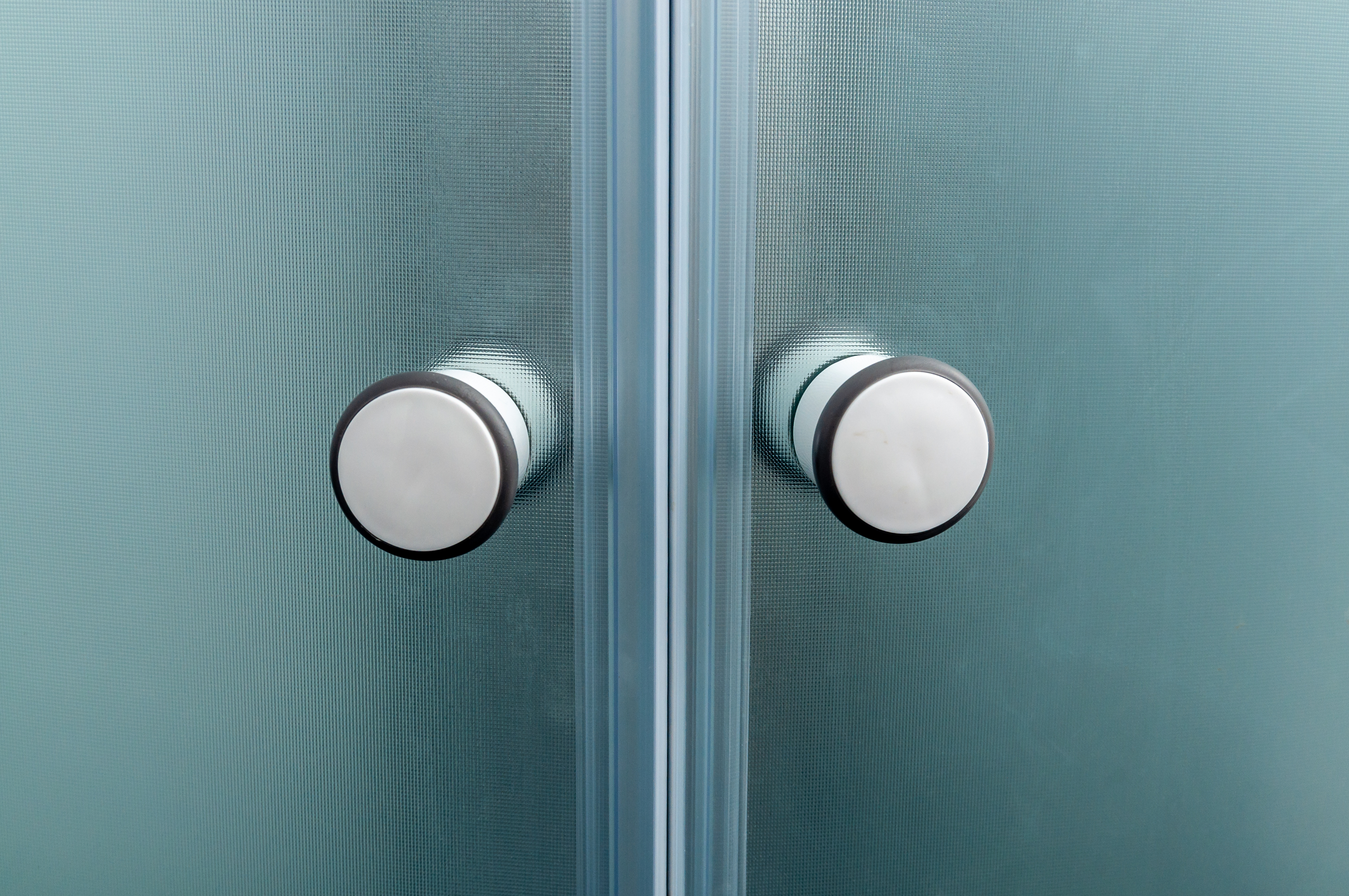
Magnetic seals include magnets embedded into the material. This allows you to install them on shower doors so that they form a strong seal when they’re closed and the magnetic force is activated.
Magnets can be embedded into different types of seals, so the appearance depends on the style you choose. The magnets will likely be visible.
You can install magnetic shower door seals on the shower door jamb, the bottom, and the sides.
Best for: Ensuring the door is tightly sealed
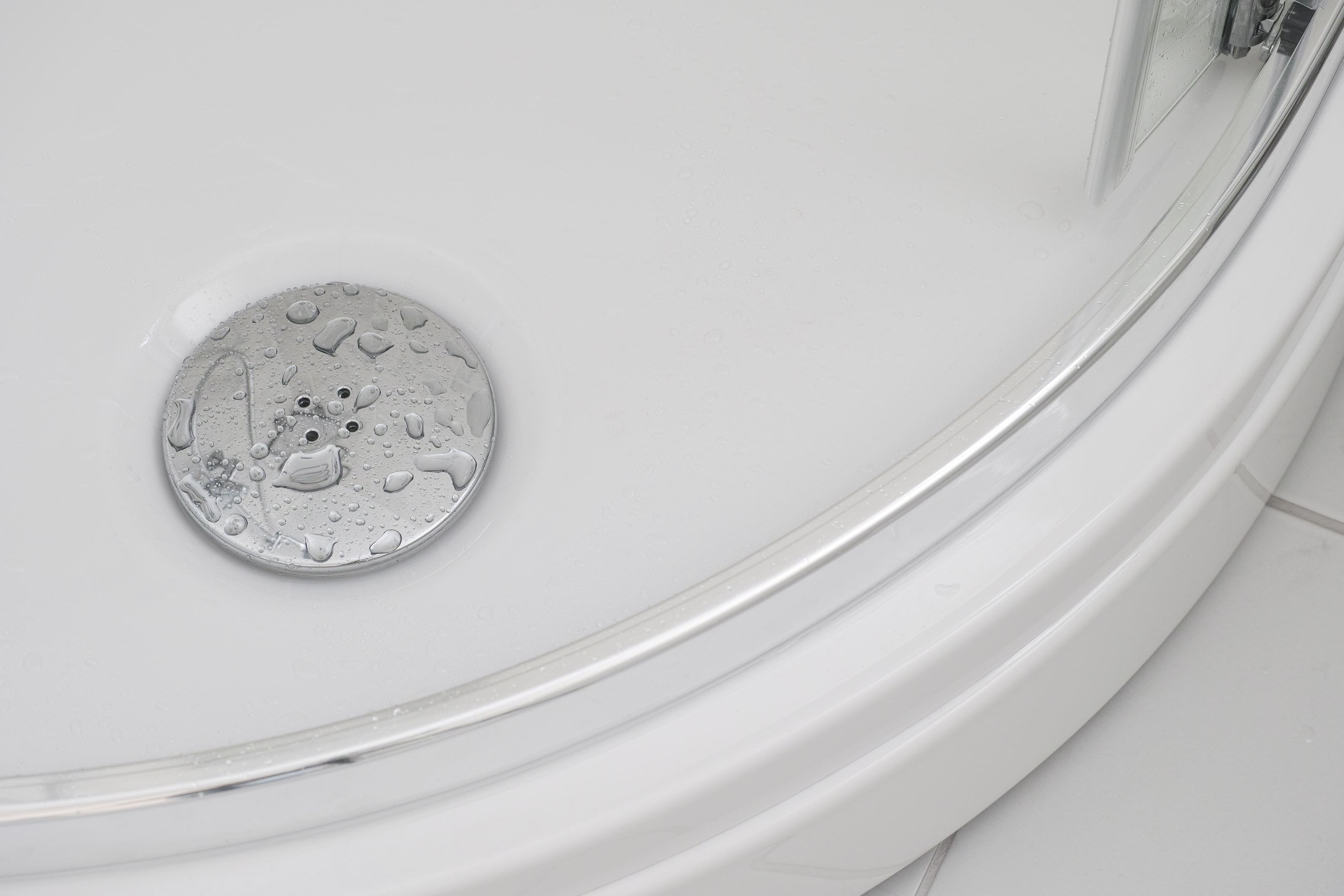
Meant for use on the bottom of the shower door, a drip rail seal not only seals the door against leaks, but it also includes a slanted piece that directs water away from the door.
Drip rail seals look more complicated than other types but only because they feature an extended side.
Drip rail seals are installed on the bottom of the shower door.
Best for: Moving water away from the bottom of the shower door
Choosing the right shower door seal can mean the difference between a stress-free shower and a flooded bathroom. Factors to consider when you choose a shower door seal include:
Glass thickness
Shower door shape—straight or curved
Frame or frameless
Magnetic or nonmagnetic
Location—jamb or bottom
The current seal that you’re replacing
If the seal that you’ve had worked well but just got worn out, you can replace it with the same style. If you weren’t happy with the performance of the original seal, you can choose a different type of shower door seal that you think will work better. A shower installer near you can also help you make the decision.
From average costs to expert advice, get all the answers you need to get your job done.

Remodeling your bathroom can add significant value to your home. Your bathroom remodel cost in Columbus, OH will depend on size, fixtures, materials, labor, and other factors.

Making your house more accessible is a must for many homeowners, especially those with disabilities or older adults. Here’s what to expect when planning for accessibility improvements.

An in-law suite can add value to your home and provide space for additional family members. Use this guide to get an idea of how much it will cost to build an in-law suite.

Get immersed in the most popular types of bathtubs, from alcove to freestanding to walk-in. Learn about features and get tips for choosing the perfect bathtub.

Learn how to remodel a bathroom to create a serene, spa-like space to enjoy every day. Follow our guide for remodel methods and designs.

Renovating your kitchen and want to know what the best tile for kitchen floor is? Our guide to the many types of kitchen floor tiles will help you make the best choice.